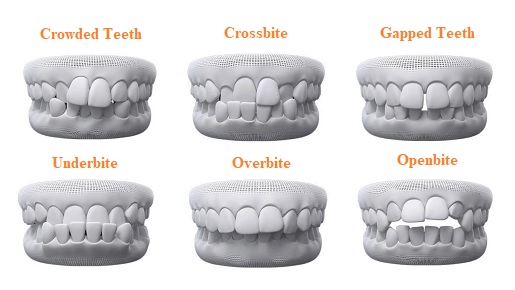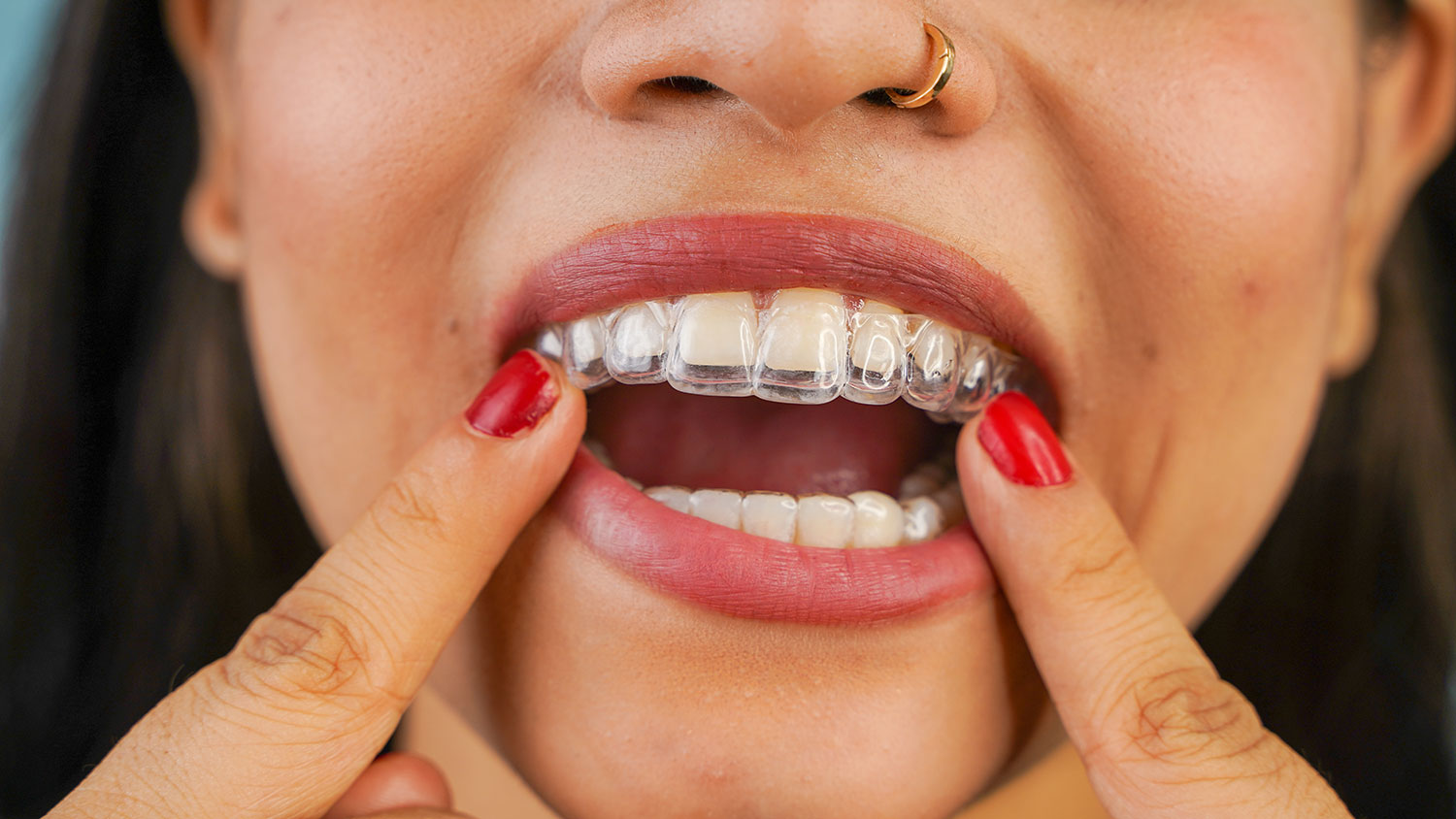Discover the Perks of Invisalign for a Perfect Smile Makeover
Discover the Perks of Invisalign for a Perfect Smile Makeover
Blog Article
Invisalign vs. Standard Dental braces: Which Alternative Is Right for You?
When thinking about orthodontic therapy, the option in between Invisalign and typical dental braces provides a number of crucial factors that merit cautious evaluation. Invisalign provides a discreet alternative with detachable aligners, while standard braces offer an extra visible yet efficient service for serious imbalance. Each alternative incorporates distinct benefits and disadvantages associated with looks, comfort, therapy duration, and price. Comprehending these nuances is essential for making a notified decision that aligns with your individual preferences and lifestyle. The concern continues to be: which option will finest fulfill your orthodontic demands and expectations?
Overview of Therapy Choices

On the other hand, standard braces are composed of steel braces and cords that are bound to the teeth. This method applies continual stress in time to attain positioning. While reliable for complex orthodontic problems, typical dental braces require normal check outs for changes and can present challenges in keeping dental hygiene because of the problem of cleansing about wires and braces.
Both choices have their merits, and the selection typically rests on particular oral conditions, way of life choices, and client conformity. Eventually, consulting an orthodontic professional is vital for figuring out one of the most suitable treatment plan tailored to private requirements. Comprehending the nuances of each choice can dramatically affect the total success of orthodontic treatment.
Visual Considerations
A substantial aspect influencing the option between Invisalign and typical dental braces is the visual charm each therapy supplies. Invisalign aligners are crafted from clear plastic, making them essentially undetectable when worn.
In contrast, conventional braces include steel brackets and wires, which can be extra obvious. While developments in orthodontic modern technology have actually caused the advancement of smaller braces and colored elastics, typical dental braces still maintain an even more conspicuous profile. For some individuals, the visibility of dental braces might deter them from looking for required therapy.
Ultimately, the selection between Invisalign and standard braces may rest on personal choices regarding aesthetics. People who focus on discretion commonly favor Invisalign, while those that are much less concerned concerning visibility may go with typical dental braces. Understanding the visual implications of each option is important for making a notified choice that aligns with one's lifestyle and choices.
Comfort and Convenience

In terms of convenience, Invisalign aligners are detachable, making it possible for people to appreciate their preferred foods without limitation and maintain optimal dental health. Brushing and flossing are simplified, as the aligners can be obtained throughout these routines, whereas conventional dental braces call for cautious maneuvering around braces and wires.
Furthermore, Invisalign's modern system permits less orthodontic visits. People normally obtain several sets of aligners simultaneously, which can improve the treatment procedure and minimize time spent in the orthodontist's chair. On the other hand, conventional dental braces require normal adjustments, making them much less convenient for those with hectic timetables. Invisalign. Overall, the comfort and convenience of Invisalign make it useful site an enticing selection for several people looking for orthodontic treatment.
Treatment Duration and Efficiency
While both Invisalign and traditional dental braces work in correcting oral misalignments, the period of therapy can differ substantially in between both options. Usually, Invisalign therapy can take anywhere from 12 to 18 months, depending on the complexity of the situation. The clear aligners function by slowly changing useful source teeth into their desired settings, and routine follow-ups with an orthodontist assistance make sure progression continues to be on track.
On the other hand, conventional braces typically require a longer dedication, usually ranging from 18 months to three years. This results from their set nature and using brackets and cables, which can be a lot more efficient for severe misalignments and complex instances (Invisalign). The therapy efficiency of standard braces is well-documented, as they permit for accurate changes and higher control over tooth movement
Eventually, the choice in between Invisalign and typical dental braces may hinge on both the anticipated therapy duration and the certain dental concerns at hand. Consulting with an orthodontist is vital, as they can offer customized suggestions based upon specific needs, guaranteeing the chosen method aligns with preferred timeframes and end results.
Cost Comparison and Insurance Coverage Choices
Cost plays a substantial role in the decision-making procedure for people taking into consideration orthodontic treatment, whether selecting Invisalign or standard braces. Usually, the cost of Invisalign varieties from $3,000 to $8,000, while traditional braces usually set you back between $2,000 and $6,000. Aspects influencing these costs consist of the intricacy of the instance, the duration of therapy, and geographical area.
Insurance policy coverage can substantially influence out-of-pocket costs. Numerous dental insurance policy plans provide partial coverage for orthodontic treatments, however the specifics can differ commonly. It is critical for individuals to review their insurance coverage to establish the extent of protection for either alternative. Generally, traditional dental braces might be more often covered by insurance coverage plans contrasted to Invisalign, which some insurers classify as an aesthetic treatment.
In addition, several orthodontic techniques provide versatile layaway plan, making both therapy choices a lot more obtainable. People ought to ask regarding possible funding alternatives and discounts for in advance repayments. Assessing the complete cost, including insurance advantages and layaway plan, is crucial for making a notified choice that straightens with both aesthetic choices and budget plan factors to consider.

Conclusion
In recap, the option in between Invisalign and conventional braces depends upon multiple variables, consisting of visual preferences, convenience, treatment period, and price. Invisalign offers a discreet, removable choice that facilitates dental health and nutritional adaptability, while conventional dental braces may be much more appropriate for complex oral concerns and typically come with a lower rate point. Inevitably, assessment with an orthodontist is internet crucial to assess individual scenarios and determine one of the most ideal therapy choice for accomplishing optimal dental alignment.
When thinking about orthodontic treatment, the option in between Invisalign and typical dental braces offers a number of vital aspects that merit mindful assessment.Contrasting Invisalign and conventional dental braces exposes distinctive treatment alternatives for orthodontic adjustment.While both Invisalign and standard braces are reliable in remedying oral imbalances, the duration of therapy can differ significantly in between the two options.Expense plays a substantial role in the decision-making procedure for people taking into consideration orthodontic treatment, whether opting for Invisalign or typical braces.In summary, the choice between Invisalign and standard dental braces hinges on several elements, including aesthetic choices, comfort, therapy period, and cost.
Report this page